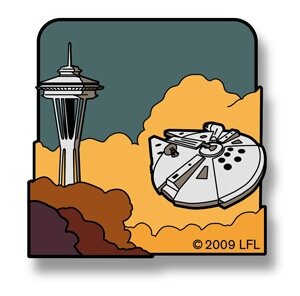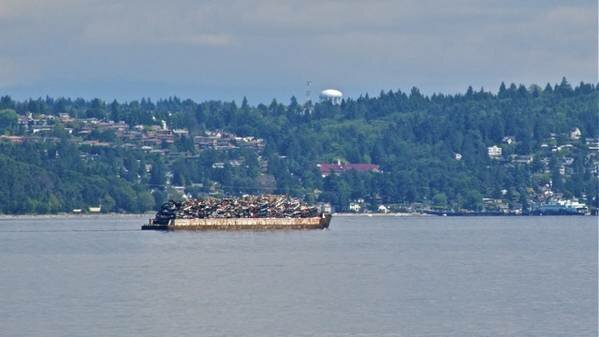It's not every day that we get a news release datelined "Toppenish, WA" so you're going to hear about it.*
Very quickly in the story, though, we leave Toppenish for more exotic climes, as NOAA has tasked a high-altitude, twin-engine Gulfstream IV-SP jet to patrol the North Pacific Ocean this winter, and watch for winter storms developing there that will hit the continent (i.e., us) later on.
From now until February, the plane will be stationed at Yokota Air Force Base in Japan, then in March move to Honolulu. While aloft, it will "collect information such as wind speed and direction, pressure, temperature and humidity," which, fed by satellite to forecasting centers, should help modeling software develop more precise outcomes.
U.S. Senator Maria Cantwell, who is chair of the Oceans, Atmosphere, Fisheries, and Coast Guard Subcommittee, draws your attention to the benefit to Washington state:
Especially during this wet La Niña winter season, more accurate data on storms gathering off our coast is critical to our safety and livelihoods. Washington state is at the frontline of dangerous storms, and this plane’s high-tech capabilities will provide important supplemental data about any dangers approaching us. This winter season, residents, businesses and property are better protected with the help of this plane, which significantly improves forecasting of winter storms....
(more)
The New York Times seems delighted to dispel any remaining myths about the untouched natural beauty of Washington state. Just this week readers have learned that there's three times the amount of plutonium waste at Hanford as "thought," and that the Puget Sound's pH level is declining in part due to ocean acidification and the water is growing more corrosive. (Thanks. We'll be expecting a make-up "36 Hours in Seattle," soon.)
The Seattle Times goes straight to the pH-decline bottom line: the impact on the Puget Sound shellfish industry.
The Taylor Shellfish hatchery on Hood Canal's Dabob Bay had its first good year in several in 2009, but company spokesman Bill Dewey said he suspects that's merely because the winds cooperated, preventing acidified seawater from entering the relatively stable bay.
The company recently installed sophisticated pH monitors at its hatchery to determine when it's best to draw water off the surface, from way down deep—or not at all.
In an earlier story, from January this year, the Seattle Times looked at the cause-and-effects of ocean acidification in general. The world's oceans act as a carbon dioxide sink, claiming excess CO2 from the atmosphere, but CO2 dissolved in water creates a weak acid solution. It turns out that shellfish larvae, for one, are very sensitive to changes in pH.
The new study on the Puget Sound's ocean-acidification intake represents the work of researchers with NOAA, the University of Washington, and the state's Department of Ecology. (It's published in the latest issue of Estuarine, Coastal and Shelf Science.) The researchers make it clear that the Sound is struggling mightily with the human activity around it--the toxic pollution and "nutrient-rich" flows that are channeled into it, both killing off life and promoting algae blooms that...also kill off life....
 "No, I don't have a landing permit..."
"No, I don't have a landing permit..."
SARLACC, the Seattle ARea Lucasfilm Artifact Collectors Club, proudly announces its first collectible lapel pin.
To celebrate the 30th anniversary of The Empire Strikes Back, the SARLACC charity pin features the Millennium Falcon flying in to land at the Seattle Space Needle. This cloisonné pin has a limited run of 1,000 and has been officially approved by Lucasfilm Ltd. and the Seattle Space Needle. Each pin will come on an individually-numbered card with an image of the Cloud City's landing platform.
All proceeds from the sale of this pin will benefit the Fred Hutchinson Cancer Research Center, whose ultimate mission is the elimination of cancer and related diseases. The Center conducts research of the highest standards to improve prevention and treatment.
Order your limited edition pin ($10) right here.
SARLACC would like to extend their gratitude to Lucasfilm, the Seattle Space Needle, Swifty Printing, PinDepot, and the Fred Hutchinson Cancer Research Center for helping make this limited edition Star Wars pin possible.


Most Recent Comments